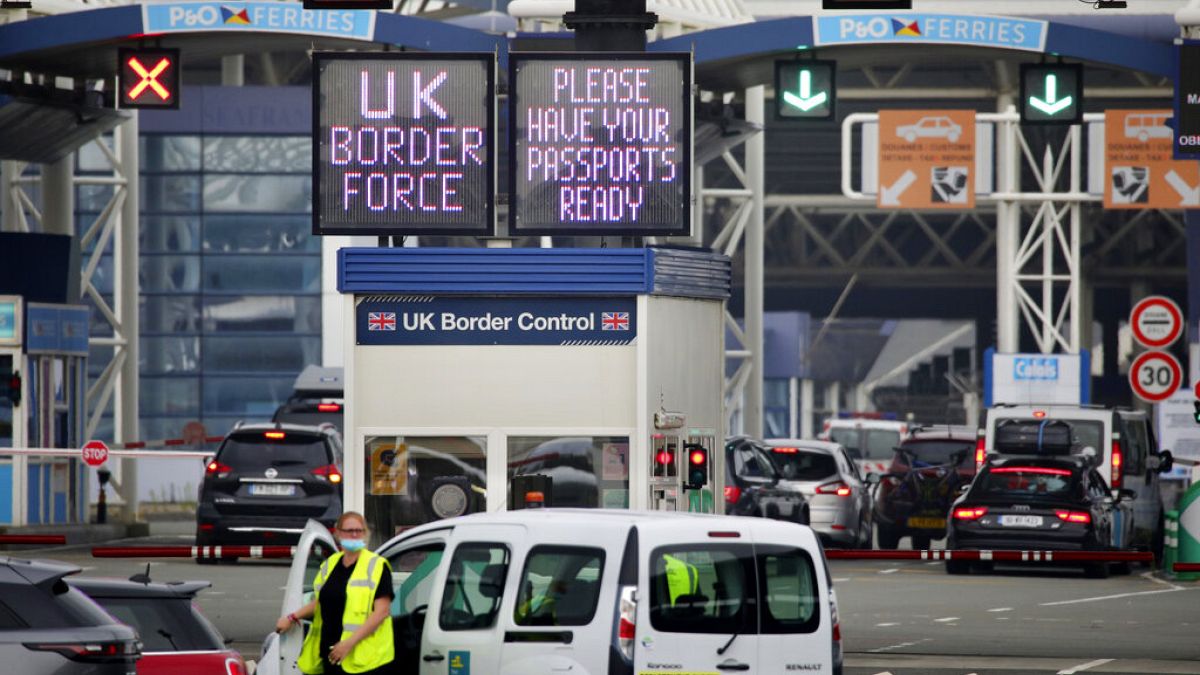Ylva Johansson, the EU Home Affairs commissioner, had previously said with utmost confidence that the scheme would launch in November.
Following numerous delays, the EU’s planned Entry/Exit System (EES) for travellers outside the Schengen Area has been postponed once again.
Just a few weeks ago, the EU Home Affairs commissioner said with confidence that it would come into force on 10 November – or 17 November, as a backup.
Now, there is no official date for the launch and the whole scheme appears to have been plunged into chaos.
While commissioner Ylva Johansson said the ambitious electronic border plan would absolutely be in place next month, it’s now not likely to come into force until 2025.
On top of that, one aspect of the scheme – taking the fingerprints of travellers to guarantee entry into the area – may now be dropped entirely, although very little is clear.
The travel industry’s reaction has been mixed, with some saying the EU is leaving us all in “limbo”.
“It is good to know the full implementation of EES is no longer expected in November, as the industry has been left in limbo waiting for news on when it will start,” Luke Petherbridge, the Director of Public Affairs at ABTA – The Travel Association said in response.
“We do still need urgent confirmation and clarification on the next steps of EES; it’s difficult to talk to a customer about a new system without knowing if it will actually be in place for their trip.”
What caused this latest delay of the EES launch?
Speaking at a meeting of EU interior ministers on Thursday, Johannson said, “10 November is no longer on the table.”
“I hope we can start as soon as possible but there’s no new timeline so far. This also depends on the legal assessment that we will do and we’re working on it right now,” she added, also speaking of “some concerns when it comes to the resilience of the system”.
As an alternative, she proposed that the EU could potentially introduce the EES in a phased manner “with a little step by step going into the system, not a ‘Big Bang’ of all border crossing points at the same time”.
The floating of a ‘phasing in’ process would not be straightforward, as it isn’t allowed under current regulations. Instead, ‘targeted amendments’ to the legal text would be required to make it happen.
Johansson also noted that Germany, France and the Netherlands had declared their unreadiness for the EES.
The three nations, all major transport hubs in the EU, had previously expressed concerns over plans to go ahead with any system which had not been tested on ‘live’ border crossings.
Could the delayed border checks be a good thing?
Despite frustrations held by many, some experts say the delay is not necessarily a bad thing.
“Given the record of delays in introducing other more standard travel authorisation systems, the EES delays are not surprising,” Tim Wilson, a professor of criminal justice policy at Northumbria University Law School tells Euronews Travel, “I suspect that the challenge in making the EES work effectively is its comparative uniqueness.”
In fact, Wilson – who has given evidence to parliament on the use of electronic borders – thinks the delay might be a good thing – for now at least.
“It is a gain all round for passengers, border control agencies and the travel industry. In the meantime, for non-visa entry, the physical stamping of non-EU passports will continue.”
While the travel industry has invested hundreds of millions of euros into the scheme, many officials are said to be relieved about the delay, despite their expenditure.
That might have been a different story had the scheme been scrapped entirely, however.
“The IT and building expenditure is most unlikely to be a waste of money,” Wilson says. “Though greater transparency would help avoid the risk of unnecessary expenditure for travel operators, etc, on staff recruitment/training, and help the travelling public to plan future travel with greater confidence.”
It is, though, estimated that more than £100m (€120m) has been spent in the UK preparing for the start of the EES.
Delayed EES means more time to work on teething issues
Just this week, the Port of Dover – a main hub for travel out of the UK – started its work on a vast new canopy which will allow motorists to provide fingerprints and facial biometrics without holding up the flow of vehicles, queueing to board ferries to mainland Europe.
For now, authorities at the port may be breathing a sigh of relief.
Government officials representing Dover have repeatedly warned of a ‘worst-case scenario’ which could see delays of up to 14 hours affecting freight traffic, car and coach travel when the scheme is launched.
Some 68,000 coaches and 1.6 million cars pass through the port on a yearly basis, and there are concerns the system simply won’t be able to process everybody in a timely manner – although authorities say the new border control canopy will help to alleviate any issues.
Christina Brazier, Head of Industry Affairs at Association of Independent Tour Operators (AITO) is among those industry experts who is grateful for the delay.
“We welcome the European Commission’s decision to delay the implementation of the Entry/Exit System in light of the many unresolved questions and concerns raised by Member States,” she said.
“This announcement gives Member States valuable time in which to prepare and for the EU to clarify key outstanding issues. We fully support the proposal of a phased rollout, as it will allow the system to be thoroughly tested before full implementation.”
Wilson suggests that, despite some criticism, the EU’s decision to delay might actually be remembered as a sensible one.
“The politically courageous but honest decision to postpone until at least next year the launch of ESS is a textbook example of how programme delivery delays and unresolved problems should be handled,” he tells Euronews travel.
He adds that he hopes this latest delay will give EU officials “time to rethink how to ensure a realistic EES start date and avoid such a short notice cancellation again”.
What is the next step for the EES – and when might it actually launch?
Following the announcement of the delay, the EU’s Justice and Home Affairs Council is set to meet next week to discuss the EES rollout and lend some more clarity to those left in limbo.
It’s unlikely it will go ahead until the three nations – Germany, France and the Netherlands – are happy with the way it will work.
Speaking to Reuters news agency, a German interior ministry spokesperson said the three were not prepared to adopt the system as the EU agency in charge of it, called EU-Lisa, had not managed to make it stable enough to function.
The French interior ministry also told Reuters that the EES must be prepared properly before the country would go ahead with it.
The EES was initially supposed to start operating in 2022. It was then postponed until May 2023, then until the end of 2023 and finally, until 10 November.
The reasons for the delays have been blamed variously on IT issues and delays in installing automated barriers which will be required at all international land, maritime and air borders in the Schengen Area ahead of the launch.
‘Greater transparency’ on EES needed
Now, experts suggest that Johansson is wise not to have given a solid date for the launch.
“What everyone needs to see is greater transparency about progress towards implementation measured against key milestones,” Wilson says.
These, to him, include the improvement of “computer system resilience, availability of enrolment applications/kiosks, border staff training and availability, building availability/adaptation and readiness of carrier/port/airport staff and systems.”
Like many experts, though, he’s willing to bet that the scheme will go ahead at some point in the near future – rather than being scrapped entirely.
“In the present political climate [it wouldn’t be scrapped],” he says. “It is intended to give Schengen country police, etc, real-time data to prevent travel entry morphing into unauthorised migration. Some EES aspects might be optional, and a phased introduction might be possible.”
Nevertheless, the travel industry will no doubt be keen for some kind of steer on when they can expect the EES to finally come into force – although they could be waiting some time.













